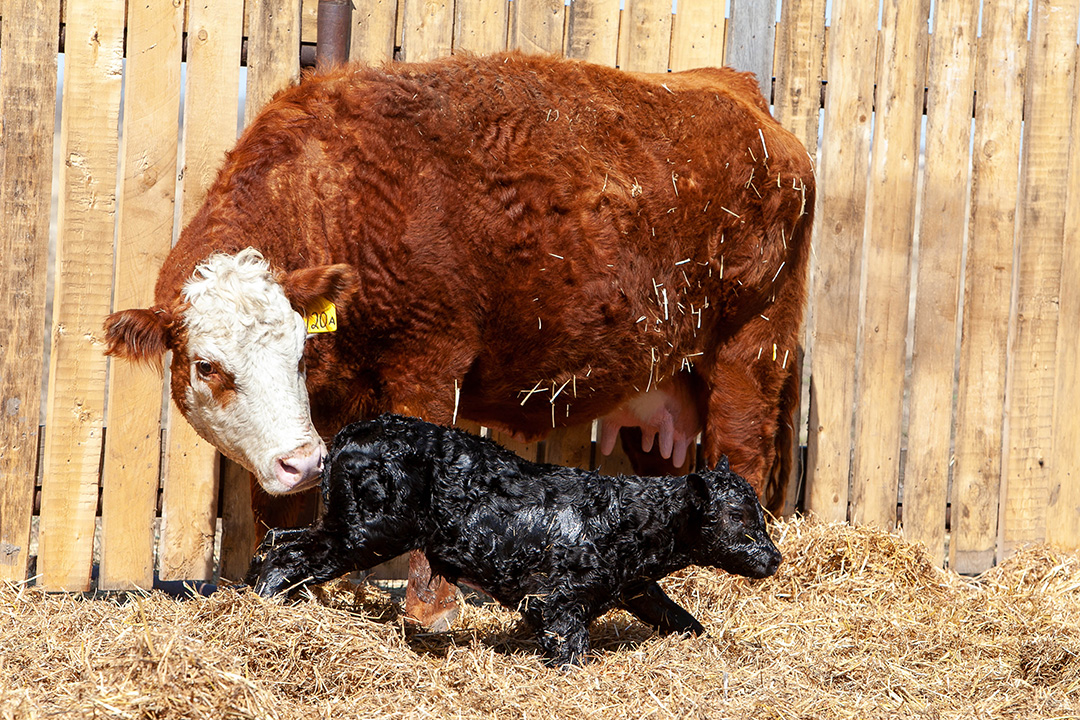
He or she: what will it be?
“Boy or girl?” Expectant mothers hear that question a lot, and thanks to ultrasound technology, many human parents have the option of finding out the answer long before their baby is born.
By Mallory Norfield
But for most cattle producers, they have to wait until after their calves are born to learn whether they are male or female.
That dilemma has led to a groundbreaking study at the Western College of Veterinary Medicine (WCVM) where collaborators Drs. Dinesh Dadarwal, John Campbell, Janet Hill and Jaswant Singh are focused on developing an easy, convenient method for determining the sex of unborn calves — a process called fetal sexing.
“From the producers’ perspective, knowing the fetal sex in advance would help producers cull or select pregnant animals to maximize the preferred gender of calf,” says Dadarwal, a food animal theriogenologist in the WCVM’s Department of Large Animal Clinical Sciences.
“They can plan ahead of time on the decision regarding cows with bull calves, which hold potentially more market value as the future calf crop for commercial beef.”
In a typical beef cattle operation, the owner has a veterinarian come to the farm each fall to detect pregnancies using ultrasound. Although the pregnancies can be confirmed, no information about calf gender is gathered at that time, and producers are unable to make important herd management plans until after calving.
If ranchers had a test available to detect fetal sex, they could get a head start on making these crucial decisions — so why is fetal sexing not already available if the information is so important?
“We’re rarely able to preg check at a time frame when you could actually sex the calf,” says Dr. Travis Marfleet, a veterinarian at Bow Valley Livestock Health in Brooks, Alta., and another collaborator on this project.
“You can use ultrasound and confirm a cow [being] pregnant on around 30 days, but at this point, the embryo is too early in development for fetal sexing to be possible.”
Unfortunately, sexing is also impossible if it occurs too late in fetal development. During fall pregnancy detection in beef herds, most of the pregnant cows are already over 90 days gestation — a point at which the fetus has become too large for sexing.
Since the timing of ultrasound exams for fetal sexing in beef cattle herds is so difficult, Dadarwal and his graduate student, Dr. Navgeet Singh, have been investigating the use of blood plasma analysis instead. It’s a technique that’s possible due to something called cell-free fetal DNA — the mother’s blood includes the fetus’s DNA as well as her own. As a result, researchers can use DNA extraction techniques to analyze a small amount of the mother’s blood plasma and detect the sex of her unborn calf.
Once the DNA is extracted, researchers use a laboratory method called polymerase chain reaction (PCR) to create further copies of the DNA present, while selecting and amplifying specific pieces of interest.
Since a female has two X chromosomes and a male has an X and a Y chromosome, the presence of a Y chromosome is most interesting. If a Y chromosome is present, it will be amplified, and a technology called gel electrophoresis imaging will make it visible.
For the most part, this research is unprecedented. The WCVM scientists have faced several challenges — many of them stemming from the fact that fetal DNA is found in extremely small concentrations in the mother’s blood. In addition, they’ve learned that the timing of blood collection is important since detection is more accurate later in gestation.
Despite these complications, the researchers are excited about the future of this unique technology. They plan to refine the technique so that it’s adaptable for field conditions, and they anticipate that a blood sample taken during the fall pregnancy check will provide cattle producers with the important information they need for herd management.
“For the first time, we have identified that at least 10 copies of fetal DNA are needed for the PCR technique to work. In the future, if everything works as we presume it would, a veterinarian would take a blood sample at the pregnancy check during the fall and send the sample for PCR testing,” says Dadarwal.
While producers will have varying priorities for the purpose of each gender, knowing the numbers of males and females coming into their herd is key. Having an accurate, convenient and economical way to detect fetal sex will provide them with the opportunity for advanced herd decision making and preparation — a welcome gift to an industry that’s so full of uncertainty.
This project is funded by the Province of Saskatchewan’s Agriculture Development Fund.
Mallory Norfield of Prince Albert, Sask., worked as a summer research student at the WCVM in 2021 and returned for another research experience in 2022. She began her first year of studies at the WCVM in August 2022. Her story is part of a series of articles written by WCVM summer research students.
